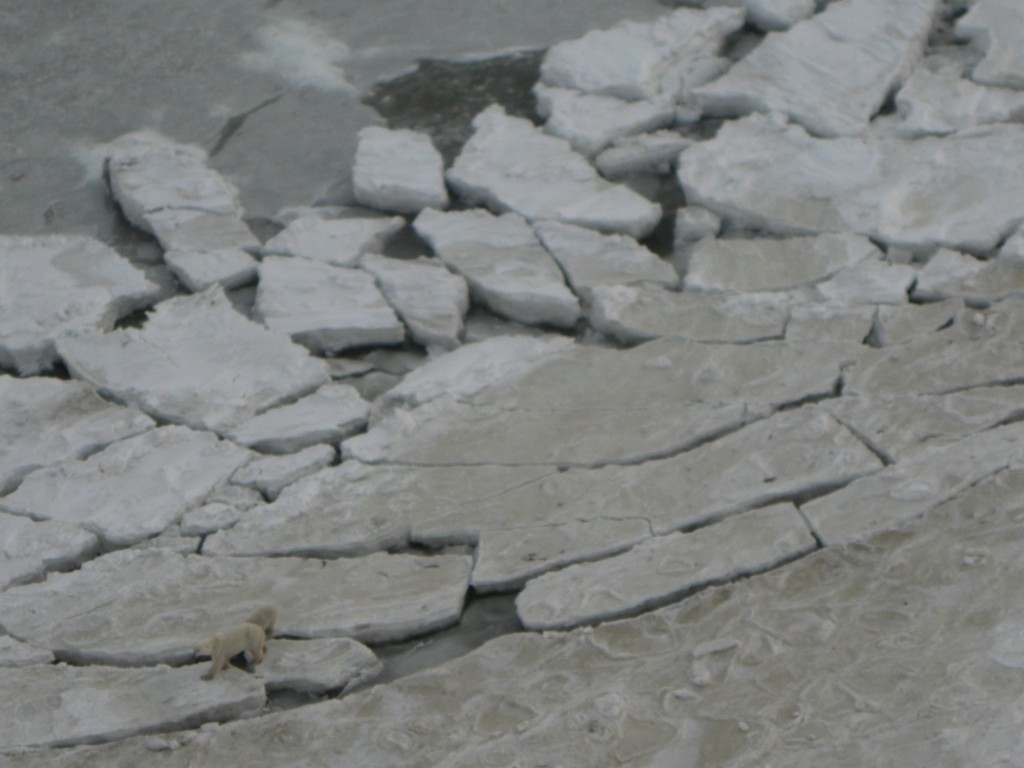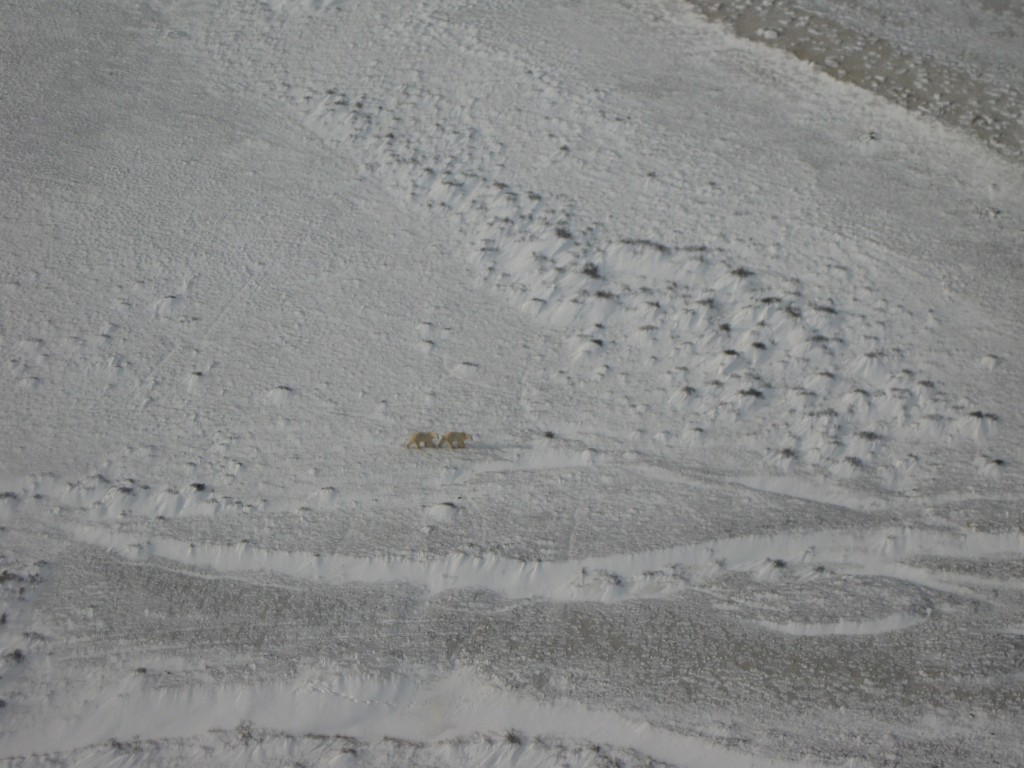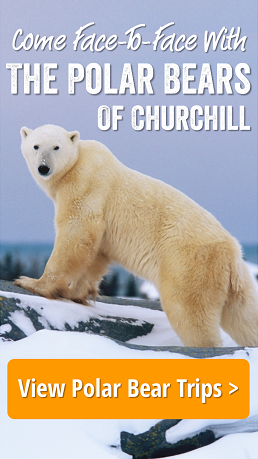by Steve Selden | Dec 14, 2014 | Churchill News
Churchill, Manitoba is the place to see polar bears. In the beautiful, temperate months of October and November the town welcomes a few thousand travelers from Natural Habitat Adventures and other wildlife tour companies on a mission to see polar bears. Almost all leave with amazing memories of the king of the Arctic…the polar bear!
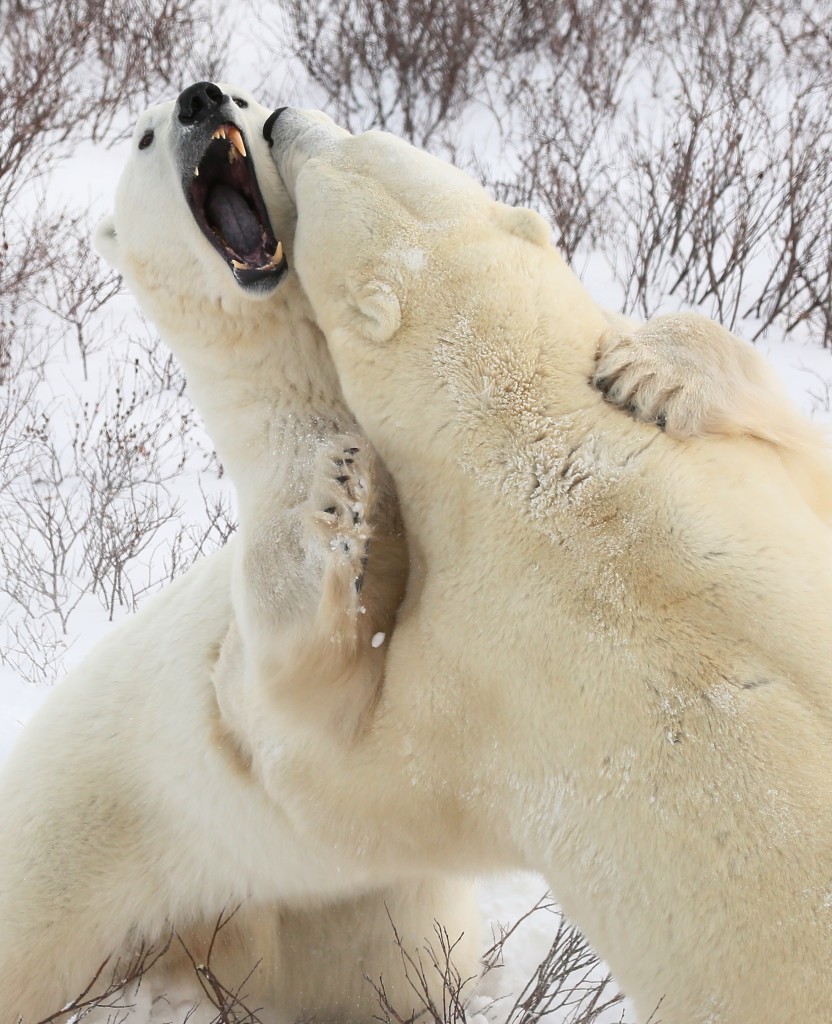
Sparring bears in the CWMA. Melissa Scott photo.
However, Churchill can be deceptively inviting and even dangerous at times for those taking unnecessary risks. No, I’m not talking about the Canadian Legion on a Saturday night…although I have personally experienced that northern “wildlife”. I am talking about polar bears…hungry polar bears at that. So, if you come to Churchill to see the Arctic king, the great white bear, stay alert, be cautious and don’t wander out of town without protection.
1.– Don’t go for an early morning hike to Cape Merry or some other place outside town limits. You probably wouldn’t play Russian roulette at home….so why would you take similar risks far away in a place you don’t know so well? Chances are you could walk the few kilometers there and back without getting mauled or slain by a polar bear but then again it only takes one bear.
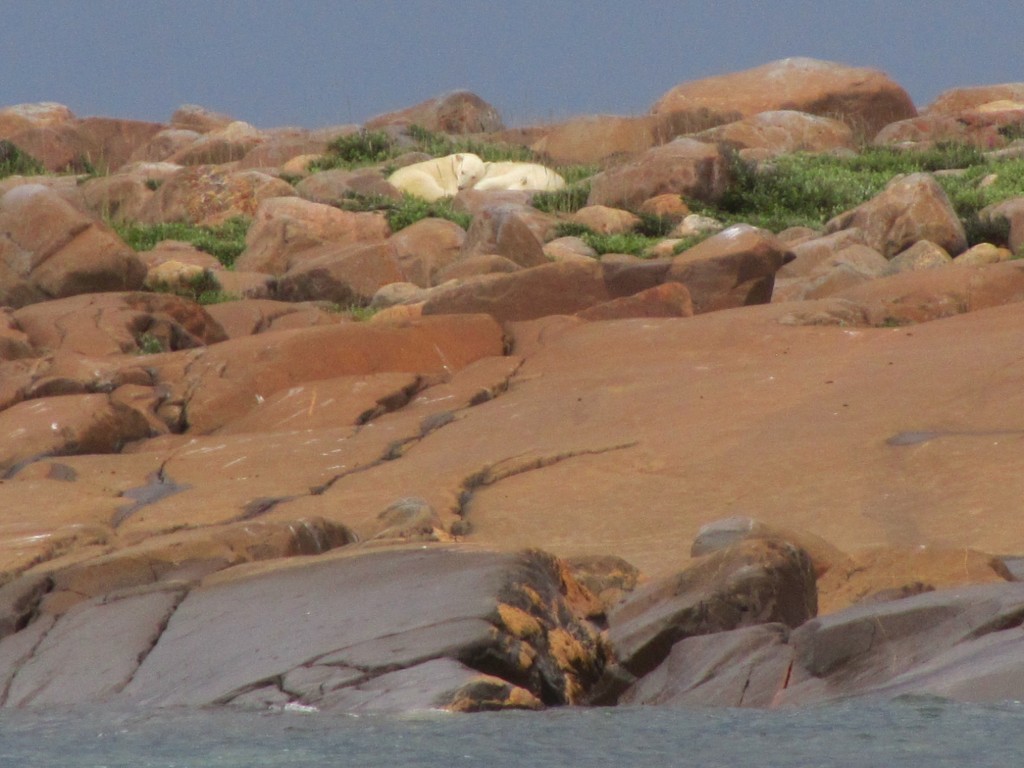
Polar bears on Eskimo Point. Stephanie Fernandez photo.
2.– When you leave your house or residence in the dark, look both ways. Also, try to park the driver side door facing your house door for easy access Polar bears are notorious for sneaking into the town in the wee hours of the morning when most people are sleeping and Manitoba Conservation officers are sleeping as well. Most people in Churchill leave their doors unlocked for anyone facing a surprise polar bear encounter. It’s Kind of a custom in Churchill.

A polar bear trap being removed with cargo from Churchill.
3.– No strolling along the precambrian shield on the coast of the magnificent Hudson Bay. The rolling, polished granitoid rocky coastline can provide really nice sleeping or resting spots for bears. And they really don’t take kindly to surprise wake up calls. The surprise will quickly be yours.
4.– Don’t drive a ATV along the coast road…in a thick fog. Been there, done that on the way to the annual old laboratory party out by the airport hosted by infamous researcher and professor Paul Watts. Couldn’t see three feet in front of the vehicle the whole way out along the coastal road. One of the scariest yet thrilling things I’ve done with my fleece on. Oh yeah…party was rocking too. The ATV came back in the back of a pick up truck.

Polar bear attempting to maul me in a vehicle. Steve Selden photo.
5.– If you want to be a wildlife photographer for long, keep the windows rolled up when shooting polar bears from a vehicle other than when a polar rover. In the old days in Churchill many photographers would get their money shots out at mile 5 or Brian Ladoon’s dog- yard. Myself and Brendan O’Neill, working logistics for the polar bear season many years ago, got a terrifying thrill one day when a polar bear approached our unnamed photographers van and tried to crawl through the window. One of my first bear experiences in Churchill….two underwear day!
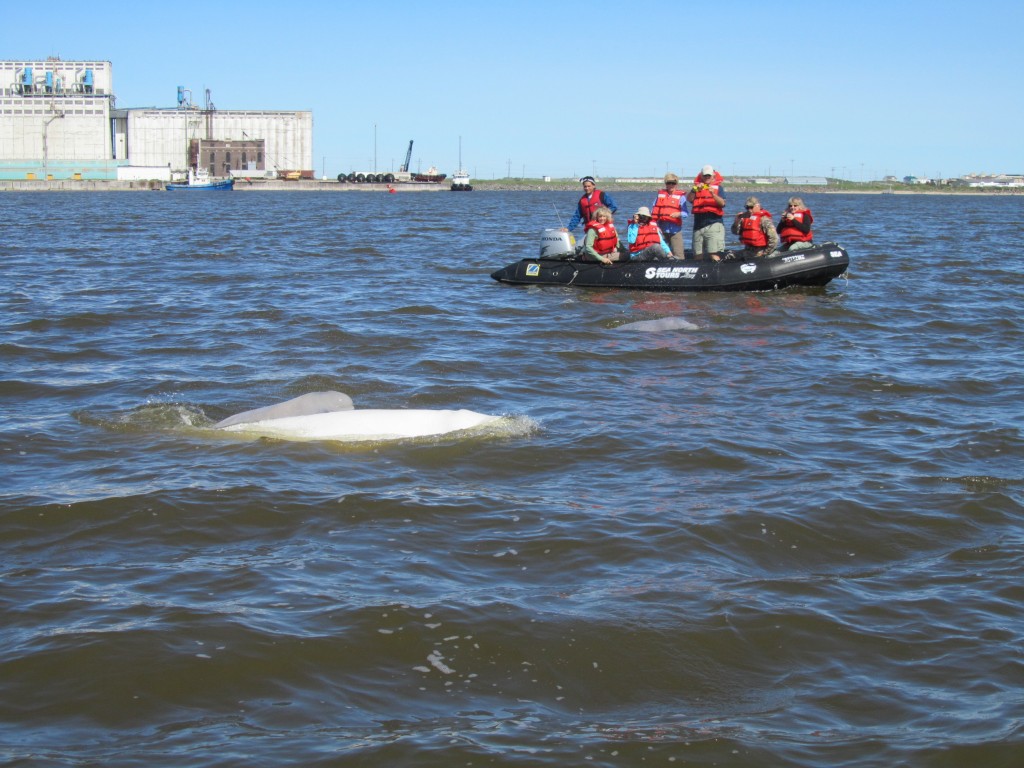
Natural Habitat travelers beluga watching in the Churchill River.
6.– Bonus.. Stay away from swimming polar bears in the summer when you have a group of travelers in a rubber zodiac looking for beluga whales. Polar bears submerge for what seems like an eternity. They can hold their breath for up to two minutes. If you get close enough the bear could surface anywhere within 20 feet or so….not fun. It’s a similar feeling to the old video Asteroids game when you hit hyperspace and hope you don’t reappear next to a huge asteroid ready to blow up your ship.
There are many more places than these that you don’t want to encounter a polar bear. However, if you use common sense and respect their territory, all should go well and your memories will all be good.
See polar bears in the wilds of Churchill, Manitoba…go to nathab.com.
by Steve Selden | Dec 12, 2014 | Conservation
Let’s face it, “cold” is what the Arctic does best….especially to those living below this amazing region of our planet Earth. So, other than the hearty mammals, particularly the mighty polar bear and humans, very few birds overwinter at high latitudes. Less than 10% of all birds that venture to Arctic and sub-Arctic regions unpack their bags and set up a permanent home there.
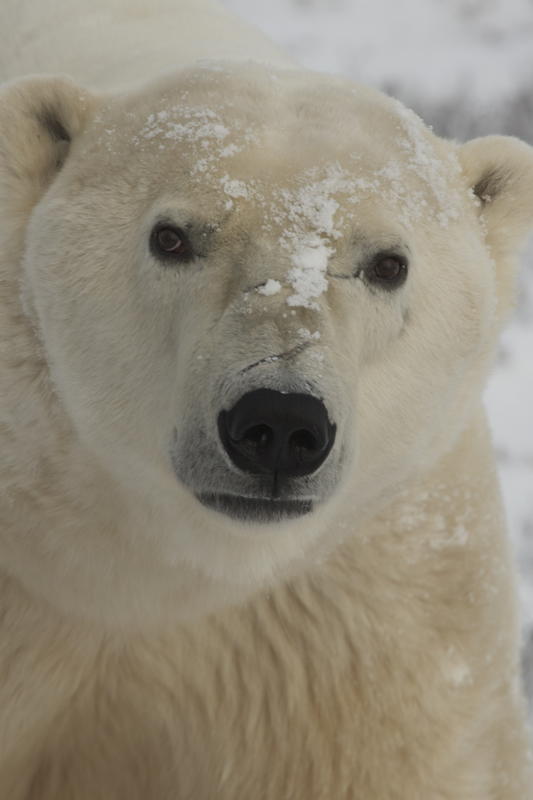
Polar bears are the king of the Arctic. Photo: Paul Brown
Birds that do either have some hearty DNA or have developed some unique ways to cope with cold temperatures that can dip to -55 Celsius. Most of you know the raven can subsist just about anywhere on the planet and the intelligence and intuitiveness of this creature has been well documented. He is truly the sentinel of true survival…especially as his shining black defiantly glares out against the snowy north.
Rock and willow ptarmigan can be seen in Churchill as the fall arrives and throughout the winter, changing to their winter’s best camouflage white. Ivory and the illusive and highly prized Ross’s gull also stay put for the winter. I’ve spotted the Ross three times in over a decade of guiding Natural Habitat Churchill summer trip. All three times the sightings were facilitated by Churchill birding master and legend Bonnie Chartier when we worked together up north.
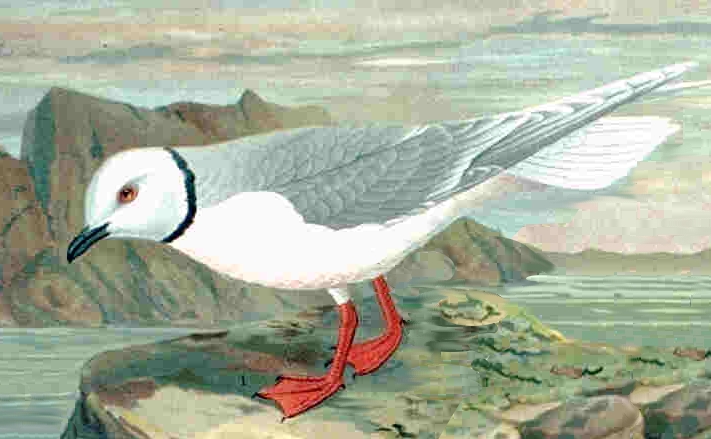
The Common and hoary redpoll, Brunnich’s Guillemot, Little Auk and Black Guillemot also inhabit the Arctic full-time. Snow buntings and gray jays are quite friendly species that call Churchill home all year. Higher up in Greenland the birds tend to shelter in utility tunnels known as utilidors.
Boreal chickadees and occasionally boreal owls and great horned owls inhabit the boreal forest. And, the mighty gyrfalcon, the fourth fastest bird on the planet…er off the planet, can be seen sporadically hunting or soaring from point to point. I have seen this bird dart across the Churchill tundra and even through town.

Gyrfalcon on the tundra in Churchill,MB.Paul Brown photo.
The most intuitive behavior exhibited for warmth and survival is how ptarmigan and common hoary redpolls take shelter in snowdrifts and endure the frigid cold by utilizing the snow as insulation. Ptarmigan and Snowy Owls grow leg and feet feathers to keep them warm throughout the winter months. They also change plumage from dark to white in order to stay camouflaged and safe from predators.
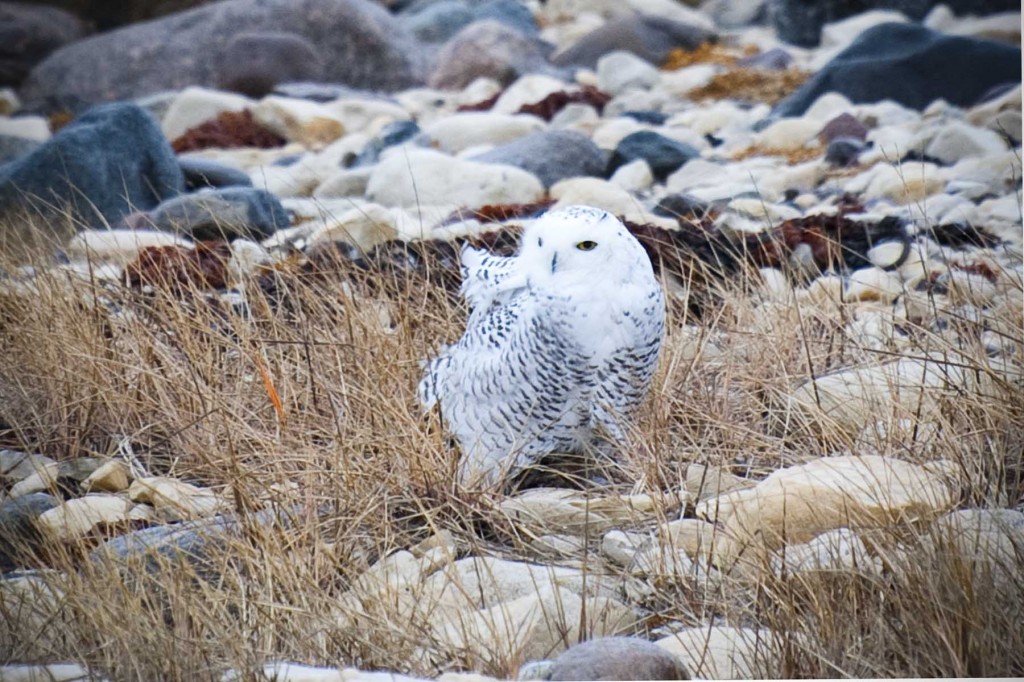
Snowy owl greets virgin travelers to the north. Colby Brokvist photo.
The summer months are reminiscent to a beach-side resort with the bird population ballooning by more than 200 additional migrant species arriving in early spring. These are birds that cannot survive the harsh conditions of winter in the far north though return each year to take advantage of the bounty of food sources thriving in the Arctic summer. The most incredible journey is clearly that of the Arctic tern…making the pole to pole round trip of nearly 45,000 miles.

Arctic tern hovering above the nesting grounds. Rhonda Reid photo.
Many of these species arrive early and set up nests for the short but productive breeding season. With snow cover still prevalent, these hearty nurturing parents live off their stored fat reserves for energy. The majority of the Arctic and sub-Arctic species are wetland feeders such as various ducks, swans and geese. Waders and shorebirds also scour the marshes and shoreline plucking all the organisms they can from the Earth.
by Steve Selden | Dec 11, 2014 | Videos
The Arctic fox is primarily a carnivore that lives inland, away from coasts. However, in recent years we have seen a notable increase in numbers spotted along coastal areas and out on developing sea ice.
Lemmings constitute the main diet of the animal though they also prey on seabirds and their eggs as well as various marine life along the coast. The lemming population tends to exist on a wavering scale from season to season. With those fluctuations we also see yearly changes within the population of Arctic fox in the Churchill region. When the rodent population decreases, foxes head out onto the Hudson Bay pack ice and survive on seal or other marine kills from polar bears. One can clearly see how the delicate web of life in the Arctic is reliant on opportunistic principles of survival.
Want to see these majestic creatures and polar bears in the wild? Visit nathab.com to see how.
by Steve Selden | Dec 9, 2014 | Churchill Photography
Nearly all polar bears in the Churchill area have ventured onto the Hudson Bay pack ice. Although the northern winter seems unending in the far north, the time for polar bears to gather the sustenance they need from seal-hunting is relatively short. With the extreme weather and ice conditions working consistently to minimize the kill success of polar bears, every opportunity is treated as a golden one. Whatever fat-storage polar bears need to survive the increasingly ice-free summers, the majority must be accumulated through these “ice-solated” interactions. This season most polar bears seemed very healthy overall and hopes for another long ice-season are high.
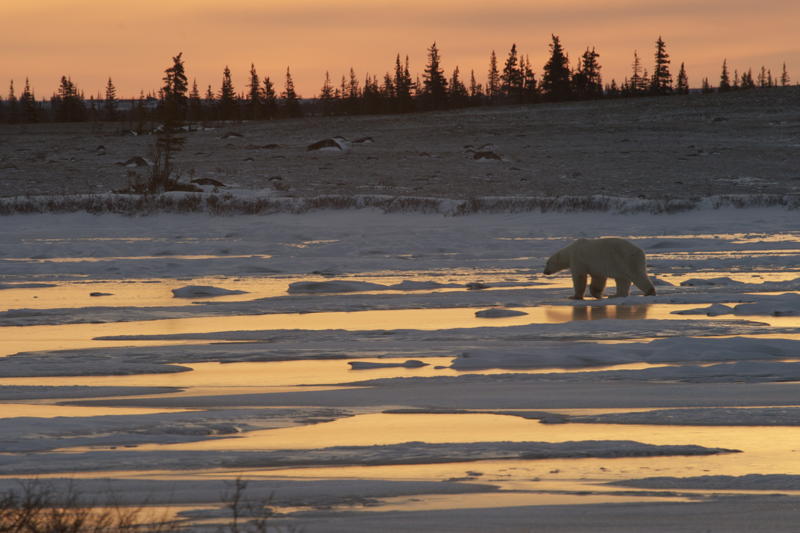
Polar bear on the frozen thermakarst near the hudson Bay. Photo: Paul Brown
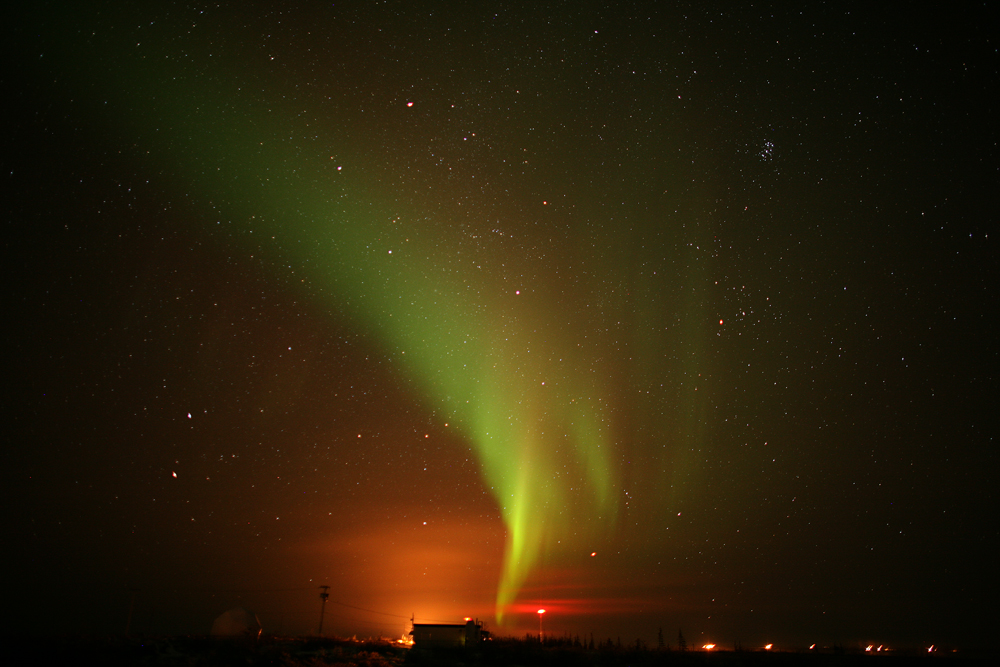
Aurora shines brightly in the Churchill night.
by Steve Selden | Dec 3, 2014 | Videos
Check out this BBC Documentary on polar bears on Wrangell Island. Quite an interesting view of the world in which polar bears survive. With sea ice coverage decreasing as a result of global warming, this video will give you insight into how polar bears rely on the ice surface for their subsistence.
Come see the polar bears of Churchill in the wild with Natural Habitat Adventures!












